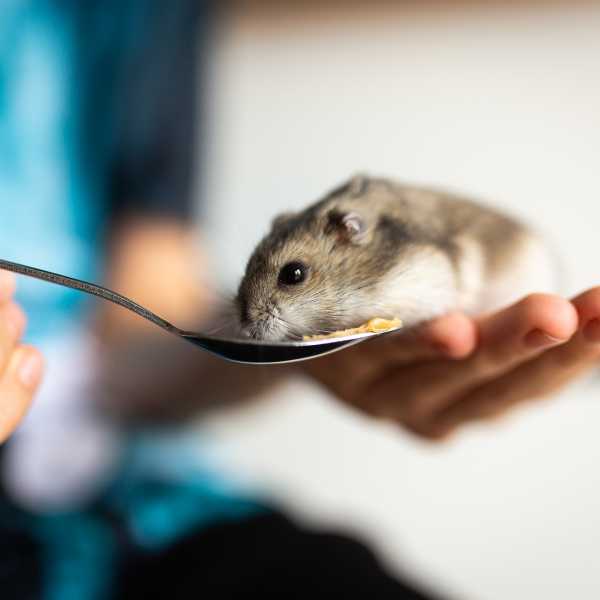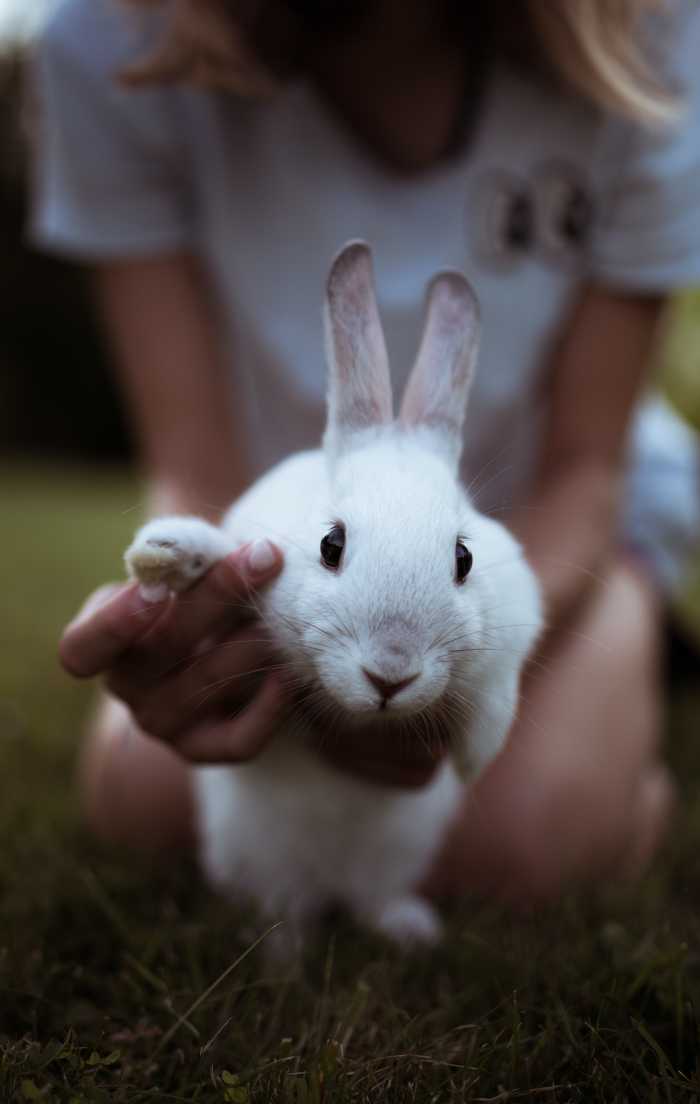
Pets Radar - Guide to rabbit care: Five tips to keep your bunny healthy
Posted on 12 April, 2021

Photo by William Daigneault on Unsplash
Written by Catherine Barnette DVM for Pets Radar
There's more to good rabbit care than first meets the eye. Despite this, to many families, a rabbit looks like a relatively low-maintenance pet. Simply buy a cage, buy some rabbit food, and you’re all set, right? Wrong! In order to provide a healthy environment for your rabbit, it’s important to do your research and learn about properly caring for your rabbit. Providing one of the best rabbit hutches along with an appropriate enclosure (see our Buyers' guide to the best rabbit runs) is vital. Regular exercise, a well-balanced diet, mental stimulation, socialization, and appropriate veterinary care are also important components in properly caring for your pet rabbit. Taking good care of your rabbit is essential if you want it to reach a typical 8-12 year lifespan.
1. Create a suitable and safe enclosure for your rabbit
Although some rabbit owners house their pets in an outdoor hutch, an indoor enclosure is the best housing option for your rabbit. This will not only protect your rabbit from temperature extremes, but will also protect your rabbit from predators, such as cats, foxes, and stray dogs. Housing your rabbit inside will also allow you and your rabbit to foster a deeper bond, resulting in your rabbit being more affectionate towards you and your family members.
There are a variety of options for indoor rabbit housing. Some rabbit owners dedicate an entire room to their rabbit, removing anything that isn’t “rabbit proof” and creating separate areas for food, rest, and elimination within the room. Most owners, however, purchase a rabbit condo or rabbit cage. When choosing a condo or cage for your rabbit, more space is better. Also, ensure that your rabbit has a smooth area within the cage to rest on, because the wire grates that are found on the bottom of many cages can lead to skin and foot issues. A piece of wood, plastic, or cardboard should be laid over at least a portion of the grate, to provide a resting place for your rabbit.
Rabbits are easy to litter-train, so most owners also place a litter box in the enclosure. This can make the task of cleaning your rabbit’s enclosure significantly easier! Avoid using cat litter in the litter box; instead, use recycled paper litter, which can be covered with hay.
2. Rabbit-proof your home, or at least a small portion of your home
Rabbits need daily exercise. Lack of exercise can contribute to a number of health issues, including obesity, poor muscle tone, low bone density, gastrointestinal disorders, urinary disorders, and behavioral issues. Therefore, you will need to let your rabbit out of its cage on a regular basis. In order to do this safely, however, you will need to rabbit-proof your home, or at least the portion of your home that you allow your rabbit to access.
Rabbits love to chew, so electric cords can be especially dangerous. Any accessible wires or cords should be covered with tubing or protective plastic. You should also protect anything that you don’t want to have damaged, especially items like plants and books. Finally, you will want to create a barrier that will keep your rabbit from going under your bed, couches, etc, because rabbits can cause significant damage in these areas.
3. Provide an appropriate diet, consisting of hay, vegetables, and rabbit pellets
The most important component of a rabbit’s diet is hay. Your rabbit should have unlimited access to hay at all times. While legume hays, such as clover and alfalfa, can be used as a special treat, grass hay should constitute the majority of your rabbit’s diet. Appropriate grass hays include timothy, oat, rye, barley, or meadow grass. If possible, you should aim to offer your rabbit a variety of grass hays, as each hay has a slightly different nutrient profile.
Green vegetables are the second most important component of your rabbit’s diet. Rabbits enjoy a variety of green vegetables, including broccoli, cabbage, leaf lettuce, romaine lettuce, Bok choy, Brussels sprouts, collard greens, kale, parsley, and others. In order to limit exposure to pesticides, you should always wash vegetables before feeding them to your rabbit. Fruits can also be given occasionally, but they should be regarded as a special treat and should not be a part of your rabbit’s daily diet.
Rabbit pellets should comprise a small portion of your rabbit’s daily diet. Overfeeding pellets can lead to obesity, while also decreasing the quantity of nutritious hay and vegetables that your rabbit eats. Additionally, eating large amounts of pelleted food can slow your rabbit’s gastrointestinal movements. Aim to provide approximately 10-15% of your rabbit’s diet in the form of pelleted rabbit food, or approximately ¼ cup of pellets per 4 pounds of body weight per day. For more info read our five do's and don't of feeding rabbits correctly.
4. Provide appropriate grooming, socializing, and enrichment
Rabbits are not a pet that can thrive on minimal attention. In addition to their need for exercise, rabbits have a number of other needs that require daily human interaction. Rabbits are prone to boredom. Therefore, they need to be provided with novel toys on a regular basis. These toys don’t necessarily need to be store-bought; even a cardboard box with a hole cut in it as a door can provide enrichment. Take a look at our guide to the best rabbit toys for some great ideas on accessories. Still, it’s important to interact with your rabbits on a daily basis, to provide them with both mental stimulation and socialization. Rabbits also require regular grooming, such as brushing and nail trims. In order to be able to safely groom your rabbit, your rabbit needs to be accustomed to being handled on a regular basis.
5. Work with a veterinarian to ensure that your rabbit receives regular wellness care
Like many other pets, rabbits require regular veterinary care in order to remain at their healthiest. Talk to your veterinarian about your rabbit’s health needs and learn the veterinarian’s preventive care recommendations. Many veterinarians may recommend spaying or neutering rabbits, to prevent cancer and behavioral issues. Additionally, your rabbit should see the veterinarian for a wellness visit every 6-12 months, in order to have a thorough physical examination and dental evaluation. Rabbits are prone to overgrown teeth and other dental issues, so it is not uncommon for rabbits to require dental care during the course of their lives. Additionally, you should always contact your veterinarian if you notice that your rabbit is demonstrating any signs of illness. Any respiratory signs or loss of appetite indicates the need for a veterinary visit as soon as possible.
Rabbits are a commitment
It’s important to understand that a pet rabbit represents a significant commitment, much like adding a dog or cat to your home. Although rabbits may be smaller in size, they still require a significant amount of care and attention. However, the reward for this effort can be tremendous!
To read the original post and get further info, please visit: www.petsradar.com/how-to/guide-to-rabbit-care-5-tips-to-keep-your-bunny-healthy
Tags:



